Churches run on congregational basis (and their link to Lilford Hall)
Such churches are Protestant Christian churches practicing congregationalist church governance, in which each congregation independently and autonomously runs its own affairs. Such churches include Baptist churches, Presbyterian churches, Reformed churches and the Church of Christ (as well as Congregational churches).
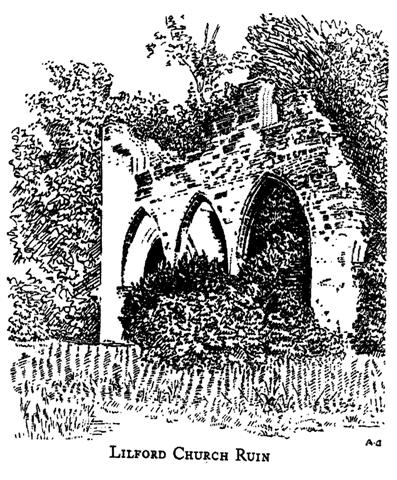
All these churches thus descend from the original congregational churches in England, a family of Protestant denominations formed on a theory of union published by the theologian Robert Browne in 1582, who lived on the Lilford Estate for over 40 years.
Robert Browne
Robert Browne (1550-1633) was a prominent Elizabethan Separatist and the founder of the Brownists, a common designation for early Separatists from the Church of England before 1620. He was the first seceder from the Church of England, and the first to found a Church of his own on congregational principles, but ended up later in life returning to the Church of England.
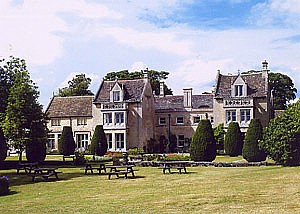 1550 Browne was born at Tolethorpe Hall in Rutland, England, part of a wealthy and very prominent Northamptonshire family, the Elmes of Lilford. Thomas Elmes (d1632) owner of the Manor of Lilford was his cousin, both being relations of the extremely wealthy Staple of Calais mayor William Browne of nearby Stamford.
1550 Browne was born at Tolethorpe Hall in Rutland, England, part of a wealthy and very prominent Northamptonshire family, the Elmes of Lilford. Thomas Elmes (d1632) owner of the Manor of Lilford was his cousin, both being relations of the extremely wealthy Staple of Calais mayor William Browne of nearby Stamford.
Robert Browne saw the Church of England as being in a state of moral disrepair and catholicism. Rather than reforming the Church from within, Browne sought out a new "true church" ethic. He advocated an early church polity which would later be known as congregationalism. He was one of the first to advocate religious separation from the Church of England, and the first to actually set up a Separatist Church. Browne was only an active Separatist from 1579-1585.
Browne has been actively criticized by those who came after for recanting his principles and giving in to the Establishment for his own personal liberty. This did not stop the influence of his writings or the spread of Brownist congregationalism and theology.
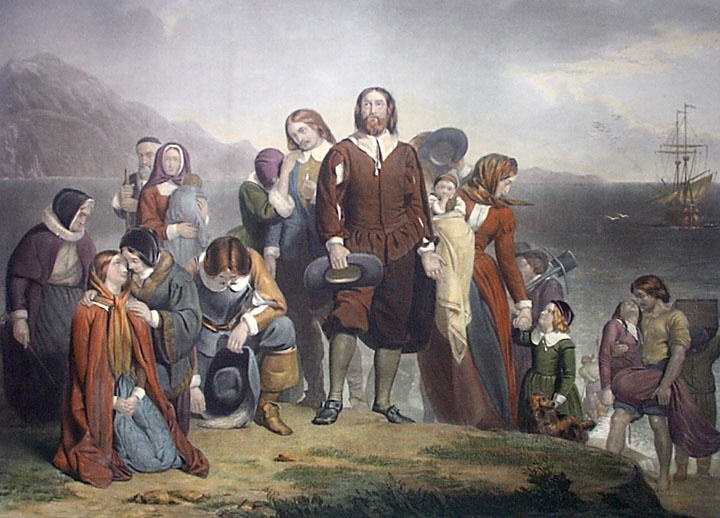 Browne and his writings were major contributions in the early development of Elizabethan English religious dissent, and the beginnings of the English Separatist movement during the later reign of Elizabeth I. His light may have shown only briefly, but he lighted the path for others to follow including some with other more radical points of view.
Browne and his writings were major contributions in the early development of Elizabethan English religious dissent, and the beginnings of the English Separatist movement during the later reign of Elizabeth I. His light may have shown only briefly, but he lighted the path for others to follow including some with other more radical points of view.
Many English dissidents would set sail for America (including the Pilgrim Fathers) and establish congregations along the lines of basic Brownist theology. Later generations were usually referred to as Congregational. Browne has often been called the father of Congregationalism, and a father of the “Pilgrim Fathers”.
Brownists
The Brownists were followers of Robert Browne. There had been early advocates of a congregational form of organization for the Church of England, in the time of King Henry VIII. When, on the re-establishment of the Anglican Church, after Queen Mary's reign, it became clear that the English government had other plans, they looked towards setting up a separate church.
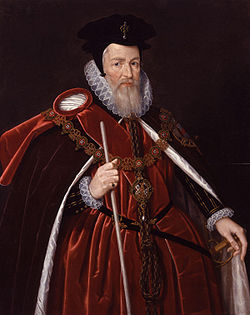 By 1580 Browne had become a leader in this movement and attempted to set up a separate Congregational Church in Norwich, Norfolk, England. He was arrested but released on the advice of William Cecil, his kinsman. Browne and his companions were obliged to leave England and moved to Middelburg in the Netherlands in 1581.
By 1580 Browne had become a leader in this movement and attempted to set up a separate Congregational Church in Norwich, Norfolk, England. He was arrested but released on the advice of William Cecil, his kinsman. Browne and his companions were obliged to leave England and moved to Middelburg in the Netherlands in 1581.
They are mentioned in Shakespeare's play, Twelfth Night (a play written with performance before Queen Elizabeth in mind), when Sir Andrew tells us "I would as lief be a Brownist as a politician".
The term Brownists was a common designation for early Separatists before 1620. Brownists, Independents, and Separatists were all used somewhat interchangeably for those nonconformists who broke with the Church of England.
The term came to be more specifically applied to those who followed the writings and teachings of Robert Browne, and to a much lesser extent those of Robert Harrison, a college friend and later companion of Browne to 1583 when they had a parting.
Congregational churches
Many Congregational churches claim their descent from the original Congregational churches, a family of Protestant denominations formed on a theory of union published by the theologian Robert Browne in 1592. They arose from the Nonconformist religious movement in England during the Puritan reformation of the Church of England. In Great Britain, the early congregationalists were called separatists or independents to distinguish themselves from the similarly Calvinistic Presbyterians. Some congregationalists there still call themselves "Independents".
Congregational churches became widely established in the Massachusetts Bay Colony, later New England. The model of Congregational churches was carried by migrating settlers from New England into New York and the Old Northwest (Ohio, Indiana, Michigan and Illinois). With their insistence on the independence of local bodies, they became important in many reform movements, including those for abolition of slavery, and women's suffrage.
As of the early 21st century, Congregationalism in the U.S. had split into three major bodies: the United Church of Christ, which most local Congregational churches affiliated with, the National Association of Congregational Christian Churches, a fellowship of churches and individuals formed to continue and foster classic Congregationalism as the merger that created the UCC was being debated, and the Conservative Congregational Christian Conference, an evangelical group.
In England, the Anglican system of church government was taken over by the king, Henry VIII. Influenced by movements for reform and by his desire to legitimize his marriage to Anne Boleyn in 1533 (without the blessing of the Pope in Rome) after divorcing his first wife Catherine of Aragon, Henry's government influenced Parliament to enact the 1st Act of Supremacy in 1534. It declared the reigning sovereign of England to be 'the only supreme head on earth of the Church in England.' In the reign of Elizabeth I, this title was changed to Supreme Governor of the Church of England, an act still in effect. The Church of England thus replaced Catholicism as the established state religion.
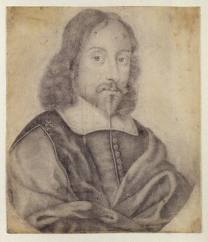
In 1579 Robert Browne was the first to establish a dissenting church separate from the Church of England. With the demise of the monarchy, the Westminster Confession of Faith (1646) was officially declared the statement of faith for both the Church of England (Anglican) and Church of Scotland (Presbyterian). In 1658 the Congregationalists created their own version of the Westminster Confession, called the Savoy Declaration. The underground churches in England and exiles from Holland provided about 35 out of the 102 passengers on the Mayflower, which sailed from London in July 1620. They became known in history as the Pilgrim Fathers. The early Congregationalists sought to separate themselves from the Anglican church in every possible way and even forwent having church buildings, as they met in homes for many years.
Congregational churches in the USA
The Pilgrims sought to establish at Plymouth Colony a Christian fellowship like that which gathered around Jesus himself. Congregationalists include the Pilgrims of Plymouth, and the Puritans of the Massachusetts Bay Colony, which were organized in union by the Cambridge Platform in 1648. These settlers had John Cotton as their most influential leader, beginning in 1633. Cotton's writings persuaded the Calvinist theologian John Owen to separate from the Presbyterian church. He became very influential in the development of Congregationalist theology and ideas of church government. Jonathan Edwards, considered by some to be the most important theologian produced in the United States, was also a Congregationalist.
The history of Congregational churches in the United States is closely intertwined with that of American Presbyterianism, especially in New England where Congregationalist influence spilled over into Presbyterian churches farther west. Some of the first colleges and universities in America, including Harvard, Yale, Dartmouth, Williams, Bowdoin, Middlebury, and Amherst, all were founded by the Congregationalists, as were later Carleton, Grinnell, Oberlin, and Pomona.
Without higher courts to ensure doctrinal uniformity among the congregations, Congregationalists have been more diverse than other Reformed churches. Despite the efforts of Calvinists to maintain the dominance of their system, some Congregational churches, especially in the older settlements of New England, gradually developed leanings toward Arminianism, Unitarianism, Deism, and transcendentalism.
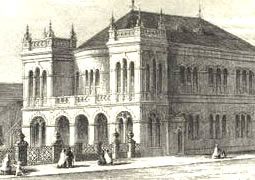 By the 1750s, several Congregational preachers were teaching the possibility of universal salvation, an issue that caused considerable conflict among its adherents on the one side and hard-line Calvinists and sympathizers of the First Great Awakening on the other. In another strain of change, the first church in the United States with an openly Unitarian theology, the belief in the single personality of God, was established in Boston, Massachusetts in 1785 (in a former Anglican parish.) By 1800, all but one Congregational church in Boston had Unitarian preachers teaching the strict unity of God, the subordinate nature of Christ, and salvation by character.
By the 1750s, several Congregational preachers were teaching the possibility of universal salvation, an issue that caused considerable conflict among its adherents on the one side and hard-line Calvinists and sympathizers of the First Great Awakening on the other. In another strain of change, the first church in the United States with an openly Unitarian theology, the belief in the single personality of God, was established in Boston, Massachusetts in 1785 (in a former Anglican parish.) By 1800, all but one Congregational church in Boston had Unitarian preachers teaching the strict unity of God, the subordinate nature of Christ, and salvation by character.
Harvard University, founded by Congregationalists, became a center of Unitarian training. Prompted by a controversy over an appointment in the theology school at Harvard, in 1825 the Unitarian churches separated from Congregationalism. Most of the Unitarian "descendants" hold membership in the Unitarian Universalist Association, founded in the 1960s by a merger with the theologically similar Universalists. This group had dissented from Calvinist orthodoxy on the basis of their belief that all persons could find salvation (as opposed to the Calvinist idea of double predestination, excluding some from salvation.)
Congregational churches were at the same time the first example of the American theocratic ideal and also the seedbed from which American liberal religion and society arose. Many Congregationalists in the several successor denominations to the original tradition consider themselves to be Reformed first, whether of traditional or neo-orthodox persuasion.
In 1931 the Congregational Churches and the General Convention of the Christian Church, a body from the Restoration Movement tradition of the early 19th century, merged to form the Congregational Christian Churches. The Congregationalists were used to a more formal, less evangelistic form of worship than Christian Church members, who mostly came from rural areas of the South and the Midwest. Both groups, however, held to local autonomy and eschewed binding creedal authority.
In the early 20th century some Congregational (later Congregational Christian) churches took exception to the beginnings of a growth of regional or national authority in bodies outside the local church, such as mission societies, national committees, and state conferences. Some congregations opposed liberalizing influences that appeared to mitigate traditional views of sin and corollary doctrines such as the substitutionary atonement of Jesus. In 1948, some adherents of these two streams of thought (mainly the latter one) started a new fellowship, the Conservative Congregational Christian Conference (CCCC). It was the first major fellowship to organize outside of the mainstream Congregational body since 1825, when the Unitarians formally founded their own body.
In 1957, the General Council of Congregational Christian Churches in the U.S. merged with the Evangelical and Reformed Church to form the United Church of Christ. About 90% of the CC congregations affiliated with the General Council joined the United Church of Christ. Some churches abstained from the merger while others voted it down. Most of the latter congregations became members of either the CCCC (mentioned above) or the National Association of Congregational Christian Churches. The latter was formed by churches and people who objected to the UCC merger because of concerns that the new national church and its regional bodies represented extra-congregational authorities that would interfere with a congregation's right to govern itself. Thus, the NACCC includes congregations of a variety of theological positions. Still other congregations chose not to affiliate with any particular association of churches, or only with regional or local ones.
